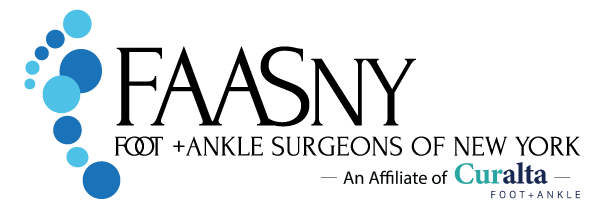Bunion – Podiatrist in NYC
What is it?
Most people describe a bunion as a bump on the side of the big toe, but it is more complex. The bump may be the only visible change, but the bones in the forefoot are misaligned. The big toe leans toward the second toe, or even move all the way under it. The skin on the bottom of your foot may become thick and painful. Bunions are progressive. They begin with shifting of the big toe, gradually changing the angle of the bones over the years and slowly producing the characteristic bump. Symptoms usually appear at later stages of the deformity.
Causes
Bunions are most often inherited. Specifically, the type of foot that makes a person prone to developing a bunion is hereditary. Poorly fitting shoes can contribute to making the deformity worse, often leading to symptoms appearing at a young age.
Treatments
Conservative treatment includes shoe modifications, splinting and padding, oral medications, injection therapy and orthotic therapy. If conservative measures fail to relieve symptoms, surgery might be necessary. Usually, surgery is done on an outpatient basis and the patient can walk immediately without use of crutches. The procedure your doctor selects will depend on your particular case, taking into consideration the extent of the deformity, age, activity level, and other factors. Bunions in children and adolescents are often more complex, resulting from numerous factors affecting the foot and ankle. Please see the section on Pediatrics (need link to another section on website)
Click here for additional information.
